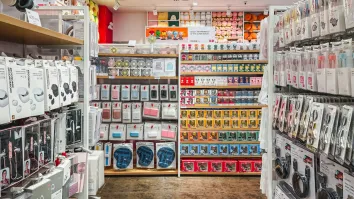
What does ‘gold standard’ mean for Asia’s payments and e-commerce scene?
The market’s diverse challenges open the door for solutions that tackle country or region-specific issues.
In order for Asian firms to attain the “gold standard” in payments and e-commerce, they must first accept that there is no one-size-fits-all in achieving that level, according to Payoneer Vice President for Asia Pacific Nagesh Devata. In fact, the firms that have been successful have adapted to the preferences of individual markets.
“In Asia, there is a diverse set of challenges across many nuanced markets with individually complex needs. When you compare this to the US or Europe, there is generally a level of commonality across these markets that is unseen within Asia.”
But whilst this complexity can definitely be a challenge, it also presents an opportunity to develop solutions that will address country- or region-level issues particularly as the sector seeks to service the underserved, he said.
When considering Asia as the “gold standard” in payments and e-commerce, one has to look into the level of innovation that the Asian market has witnessed over the past few years, especially since the pandemic began, Devata explained. Challenges to innovation such as legacy infrastructure and systems are often sidestepped in Asia and in other developing regions in order to lower the period needed for development, he added.
“This opportunity, coupled with intense competition, a huge test-pool of diverse markets, and a highly educated and motivated workforce create a transformative landscape that is moving at a much faster pace than in the west.”
Asian Banking and Finance spoke to Devata over email to find out more about the differences between the respective payments markets in Asia and the West, how disruptions have been affecting the region, and what the future holds.
What are the most notable differences between the respective payments markets in Asia and the West? Where do the two markets overlap?
The payments landscape in Asia often needs to service a much broader socio-economic range than its western counterparts, meaning that payment providers in Asia must meet the unique needs of many disparate demographics through nuanced and hyper-localised solutions. This diversity in requirements is something that, for example, North America, does not need to address on the same scale.
Device proliferation and preference is another notable difference between the payments landscape in Asia and the West. In Asia, consumers prefer mobile devices, whilst the West generally leans toward using desktop devices.
Despite their differences, Asia and the West also share some characteristics between their respective payments market — both demand a seamless user experience on their device of choice and a range of solutions that are individualised to meet their needs. Although both markets focus on the payments experience, they will generally take a different approach, due to cultural, regulatory, and geographic differences.
Where does the Asian payments scene stand amidst the re-opening of economies and the resurgence of COVID-19 cases in some countries? Which country/ies stand to gain the most, and which ones will have a lot of catching up to do?
One of the main drivers of how the payments landscape will evolve, post-pandemic, will be the rate of vaccination within each country. COVID-19 remains to be a huge disruptor for the industry in Asia, which in turn continues to drive innovation and increased demand for digital payments.
As economies begin to re-open, we may see a resurgence of physical retail, but it is also likely that we will see the convergence of physical and digital retail, resulting in a culture of omni-channel commerce.
The pandemic has normalised the digitalisation of our day-to-day lives, i.e., digital check-out, the utilisation of digital platforms, and other elements of a contactless experience. As users look to incorporate these digital tools into their physical interactions, we will see businesses that offer these types of solutions thrive. How businesses choose to adapt will dictate how they will do in a post-COVID environment, irrespective of country.
Aside from the fact that customers are quick to change their demands as they see fit, what else can payments and e-commerce firms in Asia learn from the surge in digital payments?
The pace of change seen in the digital payments space proves that despite the technological and cultural progress that has been made over the past 18 months, which was previously expected to occur over a much longer time period, there is a chance that consumer preferences can pivot very quickly. We’ve seen that users are able and willing to change how they make payments; and it would be prudent for payment and e-commerce firms to plan for regression of some sort in digital payment habits.
However, even though a resurgence in physical payments is expected, those who did not evolve to meet the needs of users in the pandemic will still find themselves at a disadvantage. Those who are able to reconcile both digital and physical experiences will be able to meet a broader set of consumer demands, and ultimately be better suited to a post-COVID world.
What can the market expect as the rest of the decade unfolds? What are you particularly looking forward to?
As the rest of the decade unfolds, I anticipate some macro trends that were amplified by the pandemic, such as the gig-economy and freelancing, being here to stay. I also expect to see an acceleration in social commerce and the incorporation of e-commerce and digital payments into our daily lives. We will see both physical and digital experiences work to complement each other, which ultimately will lead to a better experience for all.
As businesses continue to recognise that not one-size-fits-all when it comes to purchasing behaviour, we will continue to see a greater array of choices emerge. The simplification of this choice is also important. Choices that are presented in an intelligent manner will continue to improve the user experience for both sellers and buyers; and I look forward to the opportunity for both sides to be supported in this way.
We will also continue to see development, and hopefully an eventual achievement, of a completely borderless commerce landscape, which allows for a localised shopping experience, anywhere in the world. The globalisation of Asia-bound businesses that operate beyond their domestic economies, irrespective of location, is a very exciting prospect for me.

















 Advertise
Advertise








